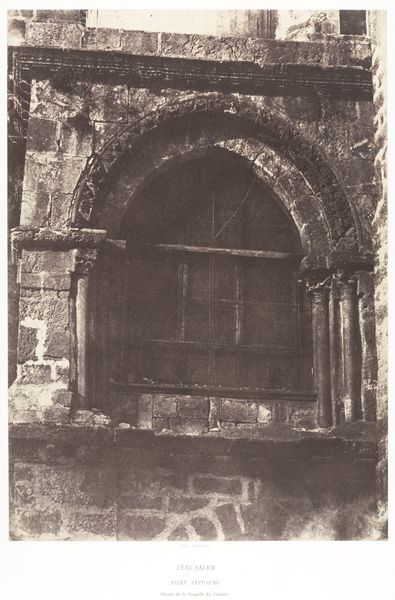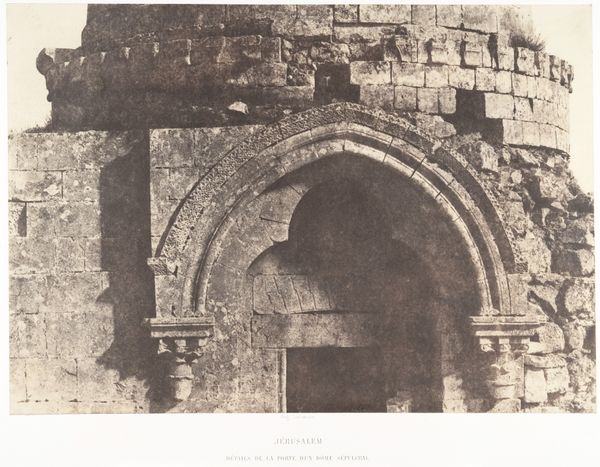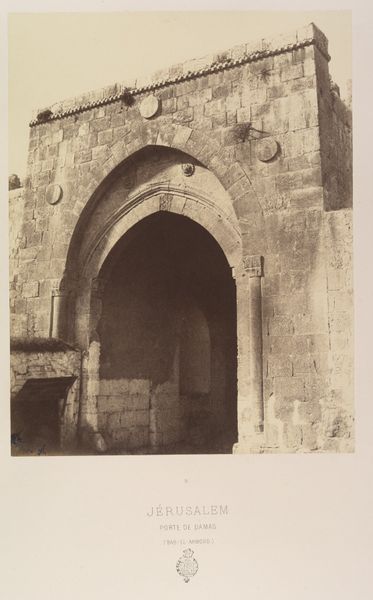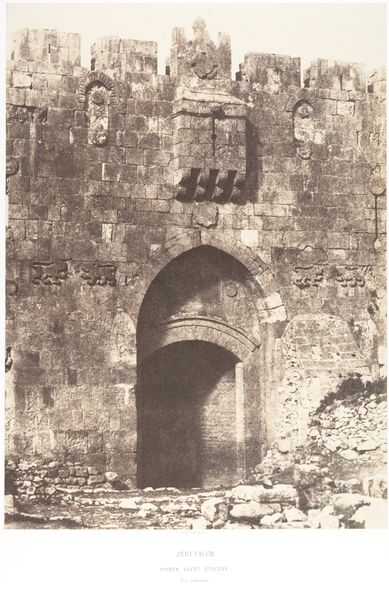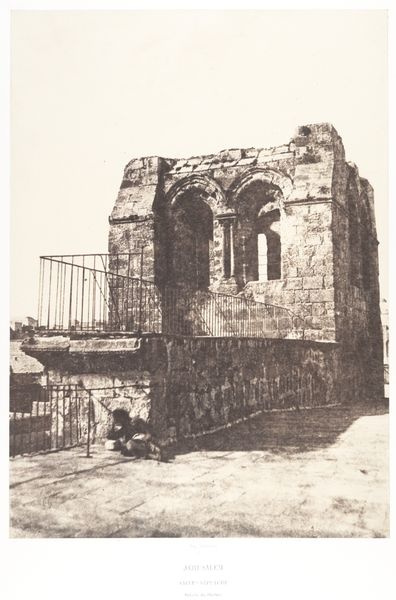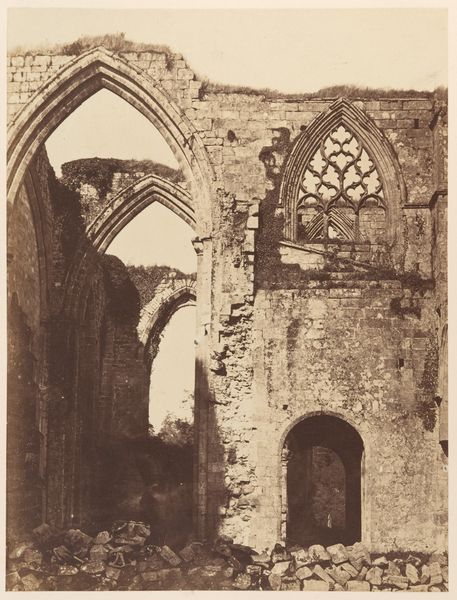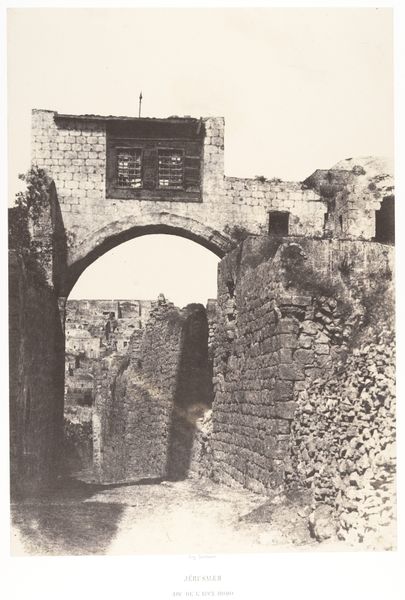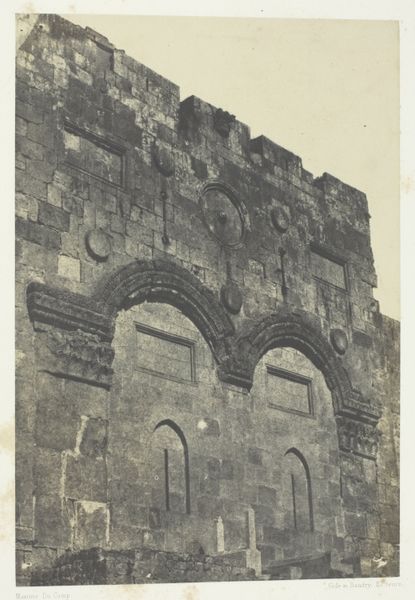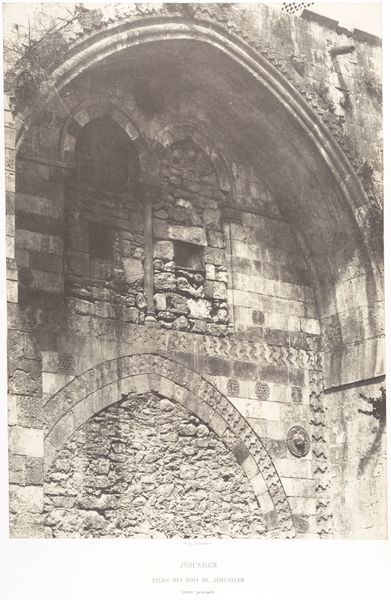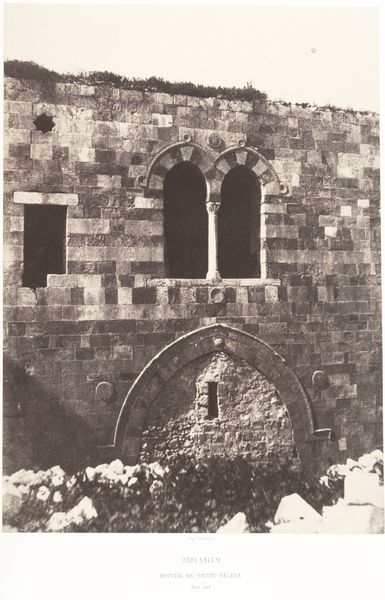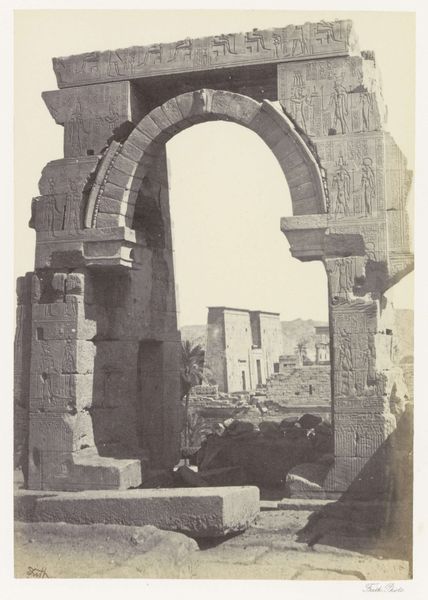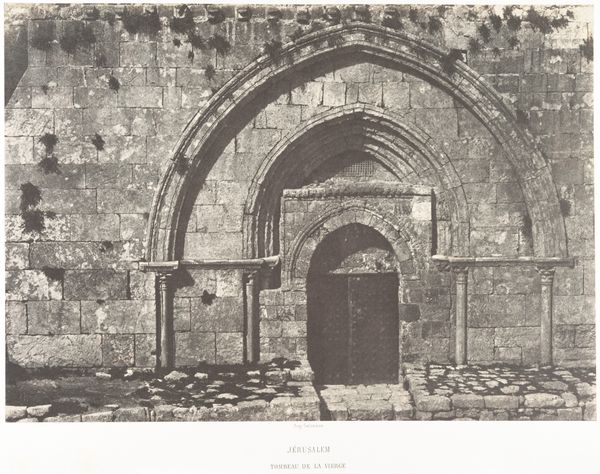
photography, architecture
#
landscape
#
photography
#
ancient-mediterranean
#
arch
#
architecture
Copyright: Public Domain
Editor: This is Auguste Salzmann's photograph, "Jérusalem, Fontaine Arabe, 1," taken between 1854 and 1859. It’s currently housed at the Metropolitan Museum of Art. It shows a stone archway; the sepia tones give it such an ancient, weathered feel. What aspects of its composition strike you the most? Curator: The composition is rigorously structured. Note how the arch itself serves as a frame within a frame. Salzmann’s acute awareness of light creates tonal contrasts. The very narrow depth of field directs the viewer's gaze centrally towards the dark space defined by the architecture. What is suggested by this sharp, direct line? Editor: It almost feels staged; I guess that light leads my eye right through the doorway. I wonder if this aestheticized, balanced composition would detract from what’s being documented? Curator: Observe the balance created. The arch's curve and detailed ornamentation offset by the simplicity of the wall's textured surface creates a very considered and formalistic image, yes. Does the "staging", as you put it, not further amplify the inherent geometry of ancient structures and materials, almost into abstraction? Editor: I see your point, actually. It highlights form, almost reducing the cultural subject matter to a geometric interplay of light and shape. I hadn't quite considered the abstraction implicit in the architectural depiction itself. Curator: Exactly! And such geometric interplay has semiotic significance. Through careful orchestration of visual elements Salzmann has turned historical record into a timeless study in form. Editor: I appreciate your observation of how Salzmann reduces architectural aspects into shapes that help one understand it more holistically. Thank you.
Comments
No comments
Be the first to comment and join the conversation on the ultimate creative platform.
